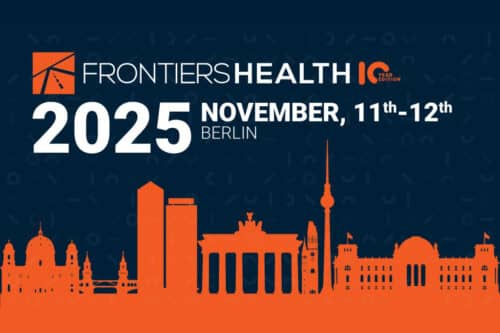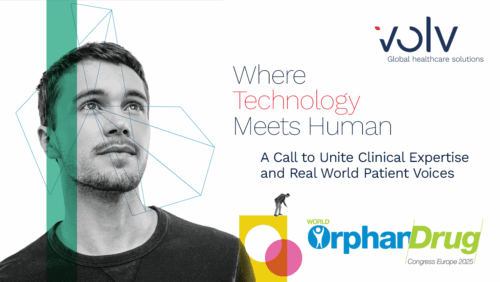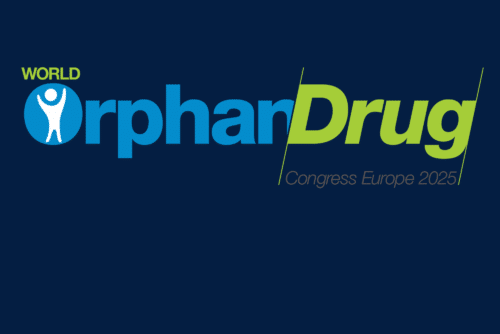By Christopher Rudolf, Volv Global
An AI Methodology for Finding Patients with Rare Diseases: Volv Global’s inTrigue
Finding patients with rare diseases remains one of the greatest challenges in modern healthcare. This case study showcases how Volv Global’s AI methodology, inTrigue, transforms rare disease detection, accelerates diagnosis, and supports healthcare systems in delivering precision medicine.
The Case Study Problem
This case study stems from an ongoing Volv Global engagement that began in July 2017. A leading pharmaceutical company partnered with Volv to design a prediction model for rare disease detection with the goal of identifying additional patients eligible for its specialist medicine.
The company faced four major challenges:
-
- The disease prevalence was extremely low, affecting only one in a million people.
- Even expert clinicians achieved no more than 76% diagnostic accuracy.
- Only one in four patients were ever correctly identified.
- Those diagnosed typically endured an average of six years of misdiagnoses before receiving the right treatment.
To make the problem even more complex, the pharmaceutical company could not provide medical records for any already diagnosed patients, limiting access to crucial training data for traditional models.
Meeting the Case Study Challenge
Volv Global set out to build a rare disease prediction methodology that could automatically learn about the disease from publicly available medical data, generating new insights with the goal of diagnosing more accurately than physicians.
We also committed to demonstrating clear patient cohort selection performance that surpassed existing manual methods. Building diagnostic models for rare diseases manually, based on expert input, is inherently problematic due to the evolving nature of medical knowledge, the complexity of disease processes, and the cognitive biases in clinical decision-making [Elstein, Schwarz 2002].
By September 2017, Volv had developed a disease learning model — applicable not only to this disease but potentially to many others. We named this methodology inTrigue, a prediction model built on evidence-based insights extracted from publicly available clinical sources. This marked a true breakthrough in applied data science.
In parallel, using innovative techniques adapted to extremely small sample sizes (typical in rare diseases and personalized medicine), Volv designed a predictive diagnostic algorithm that outperformed human clinical diagnostic performance. It achieved this by analyzing data earlier in the patient journey and identifying cognitive biomarkers, digital biomarkers, and medical biomarkers, which together enabled a new way of diagnosing patients.
Our case-finding strategy is proactive, focusing on unusual combinations of patient features to identify at-risk individuals systematically, rather than waiting for symptomatic presentation. This approach is cost-effective given the availability of electronic health records (EHRs) and delivers significant improvements in accuracy compared to traditional search engines or screening methods. Unlike broad screening tests, which require testing large populations and rarely meet cost-benefit thresholds in rare disease detection, our methodology pinpoints potential patients more effectively. Diagnostic testing, being expensive and requiring high certainty, is also minimized with this model.
Crucially, our approach directly addresses barriers that prevent quick rare disease diagnosis. It eliminates blockages in clinical reasoning that often cause physicians to retreat from diagnosing a rare condition (the well-known “Zebra Retreat”), whether due to lack of awareness or the assumption that a more common illness must be the explanation [Miller 2013].
Testing & Results
Volv tested the rare disease prediction model on a database of 2.5 million anonymised primary care electronic health records (EHRs) in the Netherlands. Importantly, the patients in this dataset were being treated for other conditions and not the underlying target disease — making the evaluation clinically robust.
The assessment confirmed that the Volv inTrigue model identified a significantly greater number of patients with the specific rare disease and outperformed both traditional prediction models and clinicians’ own diagnostic accuracy.
The Volv approach raised clinical accuracy for the detection of at-risk patients to world-class precision. Compared to existing state-of-the-art models, it achieved a two-thirds reduction in error rate. Sensitivity to false positives was measured using the Area Under the ROC Curve (AUC). On this gold-standard metric, where 1.00 equals perfect accuracy (no false positives), the Volv model achieved an outstanding 0.935 AUC, far exceeding the average human diagnostic performance of 0.76 AUC.
Performance comparison
- Volv model (inTrigue): Accuracy = 90.8% (SE = 0.4%), AUC = 93.5% (SE = 0.1%).
- Kopcke model (L2-regularised logistic regression on full feature set [Kopcke et al. 2013]): Accuracy = 73.1% (SE = 1.1%), AUC = 74.9% (SE = 1.0%).
- Miotto model (classification using relevance scoring [Miotto, Weng 2015]): Accuracy = 74.2% (SE = 1.0%), AUC = 75.8% (SE = 1.0%).
When the Volv methodology was used to augment physician diagnosis, accuracy rose even further, reaching an impressive 0.975 AUC.
Further work
As part of the project, we also developed ways to help healthcare system providers utilise the methodology within strict ethical and regulatory frameworks across different countries and regions. The solution is now highly scalable and translatable, with potential application to thousands of rare and complex diseases.
We have named this end-to-end solution: inTrigue.
Benefits of inTrigue
The inTrigue methodology delivered five core benefits to our pharmaceutical company client:
- Accurate Disease Insight
inTrigue identified the most predictive clinical evidence for assessments conducted by specialist clinicians diagnosing rare diseases. It also uncovered a novel disease predictor, which can be added to diagnostic assessments to further improve accuracy. - Patient Finding
inTrigue successfully identified hidden patients within electronic health record (EHR) systems. For such rare conditions, these individuals would likely have gone undiagnosed until a severe exacerbating event revealed the condition. - Prevalence Insight
inTrigue redefined the estimated disease prevalence, showing it to be closer to 1 in 300,000 rather than the previously assumed 1 in 1,000,000. This data-driven prevalence insight reshapes understanding of the true disease burden. - Risk Mitigation
inTrigue enables pharmaceutical companies to demonstrate to payers and clinicians new ways to reduce clinical risk by more accurately defining the treatment population. Patients who can benefit from the medicine are those who receive it. The methodology also supports FDA Risk Evaluation and Mitigation Strategies (REMS) by providing precise patient cohort identification. - Improved Financial Performance
With world-class precision in patient cohort selection, inTrigue helps companies align market access strategies with payer preferences and healthcare archetypes. By improving uptake among diagnosing physicians and reducing traditional sales costs, the model creates a more efficient buyers’ market for specialty medicines.
Summary: What does our approach do?
inTrigue is a case-finding prediction model that reshapes clinical practice by helping clinical specialists make more accurate diagnoses for precision medicine and personalised healthcare. This ensures that the precise cohort of patients who can benefit from a specific medicine are identified and treated earlier.
inTrigue leverages genetic biomarkers, phenotype markers, cognitive markers, and, where available, behavioural markers. It also identifies digital biomarkers and novel disease predictors extracted from electronic health records (EHRs) and scientific literature.
The prediction model is dynamic—it continues to learn and improve accuracy as feedback from clinical use is fed back into the system.
By shifting disease prevalence insights, inTrigue demonstrates precision case finding and enables patient cohort identification for clinical trials, helping researchers find patients that fit specific profiles.
Ultimately, inTrigue augments human decision-making and reduces the subjectivity that often hampers clinical diagnosis, case finding, and cohort creation.
FAQs
Q1: How does AI improve rare disease detection?
AI models like inTrigue analyse millions of records to detect subtle patterns and biomarkers, improving both speed and accuracy.
Q2: Can this methodology be applied beyond rare diseases?
Yes, inTrigue is scalable to common and complex diseases, supporting personalised medicine.
Q3: How accurate is it compared to clinicians?
Clinicians average ~76% accuracy. inTrigue achieves 90.8%, rising to 97.5% when used alongside physicians.
Q4: Is patient privacy protected?
Yes, the system uses anonymised records and aligns with strict ethical and regulatory standards.
References
- Elstein A & Schwarz A. Clinical problem solving and diagnostic decision making: Selective review of the cognitive literature. BMJ. 325;2002.
- Kopcke F et al. Evaluating predictive modelling algorithms to assess patient eligibility for clinical trials from routine data. BMC MIDM. 13;2013.
- Miller CS. Skin-deep diagnosis: affective bias and zebra retreat complicating the diagnosis of systemic sclerosis. Am J Med Sci. 2013 Jan;345(1):53–6.
- Miotto R & Weng C. Case-based reasoning using electronic health records efficiently identifies eligible patients for clinical trials. JAMIA. 22;2015.
About the author
Christopher is the Founder & CEO of Volv Global SA which is based in Lausanne, Switzerland. Volv is an applied data science company, that creates cutting edge approaches to solving difficult problems in healthcare and life sciences. He is passionate about innovation, thinking aloud/allowed, entrepreneurship and applying it in the healthcare and life science industry to help improve the well-being of people living with disease. He has over 30 years of experience as a technology entrepreneur and independent business advisor, having worked for many Blue-Chip organisations advising them on how to solve their critical global scale data problems. Interested in: Open-minded curious people, collaborative cross-disciplinary thinking, rare diseases, and next-generation healthcare.










